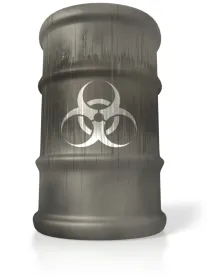On June 22, 2016, President Obama signed the “Frank R. Lautenberg Chemical Safety for the 21st Century Act” into law, making comprehensive changes to the Toxic Substances Control Act (TSCA). This step comes after years of congressional attempts to update the Act.
The changes to TSCA will have sweeping effects on various industries and manufacturers, as the law regulates a wide variety of household, commercial, and industrial chemicals. In the past, TSCA had been criticized in part due to its piecemeal regulation of only certain industries and chemicals, and the regulation of certain chemicals only through more stringent state-enacted rules. The new law provides more certainty for regulated parties and grants the U.S. Environmental Protection Agency (U.S. EPA) broader authority to regulate chemicals currently in the stream of commerce.
Preemption
Under the new law, the EPA rules implementing the Act preempt many new state rules related to chemicals. However, state chemical limitations passed prior to April 22, 2016, as well as any new actions taken under a state law that existed prior to August 31, 2003, are “grandfathered” and enforceable by the state, including, notably, California’s Proposition 65. Additionally, under the new TSCA, states may not enact new more stringent rules than existing EPA rules, and thus, the law sets a national framework for chemical regulation rather than a state-by-state scheme. The preemption elements of the law were hotly contested throughout the legislative process, and the outcome is generally seen as a benefit to industry that will result in more universally consistent regulation.
Expanded Agency Authority
The changes to TSCA also grant the EPA greater testing authority and allow the Agency to test chemicals of concern without first proceeding through the lengthy rulemaking process. Under the previous Act, the EPA could only test a new chemical for its toxicity after issuing a notice-and-comment rulemaking, which is a resource intensive and complex process. The new law allows the EPA to order the testing of new chemicals without a rulemaking.
Another significant change is that the new TSCA requires the EPA to review all chemicals that are in active commerce for safety— prioritizing review of the most dangerous chemicals first. The EPA is required to conduct a risk evaluation of all chemicals that are already in the stream of commerce. This is a significant change in the Act. Previously, TSCA required the EPA to demonstrate that a chemical posed a risk before it could require the manufacturer of the chemical to provide information, perform testing, or perform any risk analysis. Now, TSCA gives the EPA broad authority to require companies to provide health and safety data for previously untested chemicals, and the authority to keep new products out of the marketplace if they pose a risk to health or safety. In addition to the EPA’s greater authority to require testing and evaluation of chemicals, this new TSCA also requires that companies provide an upfront justification for treating information that is submitted to the EPA as confidential business information, including data and testing information.
Revised Criteria for Chemical Review
The new law also establishes revised criteria for how the EPA designates chemicals and issues new rules. Under the previous Act, the EPA was required to conduct a cost-benefit analysis, considering the financial impacts and compliance costs, of regulating a new chemical. Ultimately, under the prior law, the EPA was required to regulate a chemical in the least burdensome manner. TSCA still permits EPA to consider economic effects, but mandates that any restrictions be based on the environmental, health, and safety effects of a chemical in the risk evaluation. This health-based standard is a significant change from the previous law. In this vein, the new TSCA is also sensitive to particularly susceptible classes of individuals such as chemical workers, pregnant women, children, and disadvantaged communities, and prioritizes chemicals stored near drinking water and those that are highly toxic.
Mandated Chemical Evaluation – Timing
The EPA is subject to several timing components under the new law. The EPA has one year after the law is enacted to establish a rule implementing a risk evaluation process for existing listed chemicals. Within six months of the law’s enactment the EPA must identify ten “high-priority” chemicals for risk evaluation. Within three and a half years, twenty “high-priority” chemicals and twenty “low-priority” chemicals must be identified by the EPA. Once the EPA finds that a chemical poses an unreasonable risk, the agency must propose a rule to manage the chemical and its risks within one year.
Overall, a comprehensive change to the way chemicals are regulated in this country has been enacted and the new TSCA will have broad implications for a wide variety of businesses as thousands of previously untested chemicals may now be subject to testing and information disclosure requirements. However, the Act is not retroactive and will take effect 180 days after the date of enactment, or December 19, 2016.





 />i
/>i

